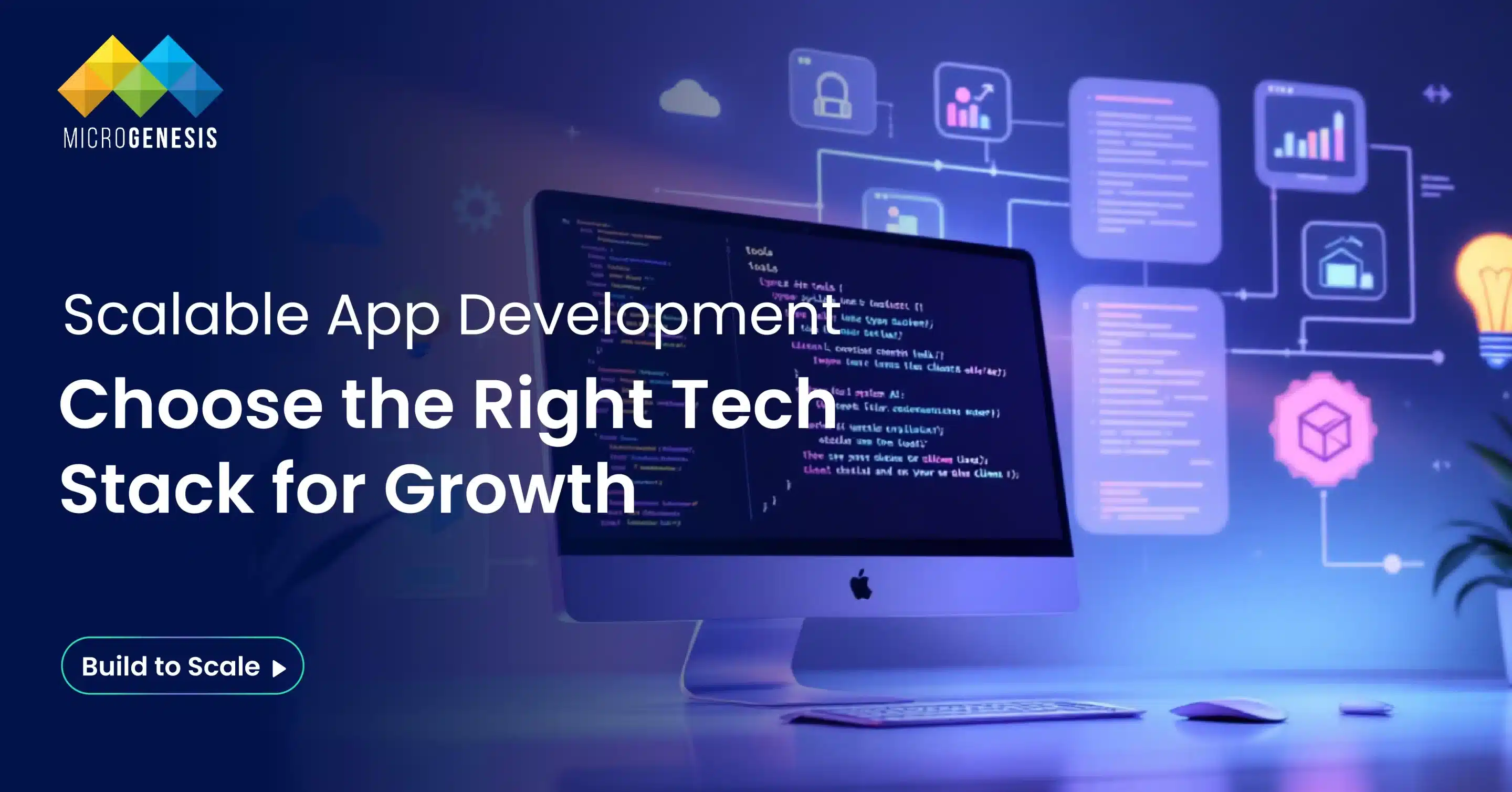In an era where users expect fast, responsive, and always-available applications, scalable app development is no longer a luxury—it’s a necessity. Whether you’re building a SaaS platform, mobile app, or enterprise solution, the ability to scale with user demand and data load determines long-term success.
At the heart of scalability is the technology stack you choose. From frontend frameworks to backend architecture, database engines, and DevOps tooling—each layer plays a vital role. This blog explores how to choose the right technology stack to support scalable, future-ready applications.
What Is a Technology Stack?
A technology stack (or tech stack) is the combination of programming languages, frameworks, libraries, servers, databases, and tools used to build and run an application.
A typical app stack includes:
Frontend (Client-side): What users interact with
Backend (Server-side): Handles business logic, authentication, and APIs
Database: Stores application data
Infrastructure/DevOps: Deployment, monitoring, and scaling tools
Choosing the right stack influences performance, development speed, maintainability, and scalability.
Why Scalability Matters in App Development
Scalability refers to an app’s ability to handle increased demand—more users, more data, and more transactions—without performance degradation.
Benefits of Scalable App Development:
Supports business growth and user base expansion
Avoids outages during high traffic (e.g., product launches)
Reduces long-term infrastructure costs
Improves user satisfaction and retention
Scalable systems are designed to expand vertically (better hardware) or horizontally (more servers) with minimal code refactoring.
Dig Deeper: Custom Application Development vs Off-the-Shelf Solutions: Which Is Right for You?
Core Factors for Choosing a Scalable Technology Stack
1. Project Requirements & Growth Plans
Estimate user base (initial and future)
Define data volume and processing needs
Identify real-time requirements (e.g., chat, gaming, stock trading)
2. Performance & Load Handling
Assess how well the stack supports concurrent users, response time, and load distribution
3. Developer Ecosystem & Talent Availability
Choose technologies with active communities and skilled professionals
4. Maintainability & Modularity
Opt for loosely coupled components and microservices to support future changes
5. DevOps & Automation Compatibility
Ensure the stack integrates well with CI/CD pipelines, containerization, and cloud platforms
Recommended Technology Stack for Scalable App Development
Frontend (Client-Side)
React.js
Component-based architecture
High performance with virtual DOM
Backed by Meta and widely adopted
Angular
Full-featured framework with built-in routing, state management
Ideal for large-scale enterprise apps
Vue.js
Lightweight and beginner-friendly
Ideal for modular, progressively enhanced apps
Backend (Server-Side)
Node.js
Non-blocking, event-driven architecture
Excellent for real-time apps (chat, notifications)
.NET Core
Cross-platform and scalable for enterprise-grade solutions
Good performance and robust security
Java (Spring Boot)
Mature ecosystem, good for high-performance microservices
Scalable and battle-tested in financial and e-commerce sectors
Python (Django/FastAPI)
Fast development cycles
Well-suited for AI/ML, automation, and data-heavy apps
Databases
PostgreSQL
ACID-compliant, reliable, and scalable
Great for complex queries and analytics
MongoDB
NoSQL, schema-less structure for fast iteration
Best for unstructured or changing data models
Redis
In-memory data store for caching and performance boost
Useful in reducing DB load in high-traffic apps
Infrastructure & DevOps
Docker
Ensures environment consistency across development, testing, and production
Kubernetes
Container orchestration for automatic scaling, load balancing, and resource management
AWS / Azure / GCP
Cloud platforms offering elastic compute, managed databases, CDN, and auto-scaling services
CI/CD Tools (Jenkins, GitHub Actions, GitLab CI)
Automate build, test, and deployment processes
Architectural Considerations for Scalability
Microservices Architecture
Breaks the app into independent, deployable services
Enhances fault tolerance and scaling flexibility
API-First Design
Encourages modularity and reusability
Simplifies integration with external systems and platforms
Stateless Services
Each request is independent, simplifying horizontal scaling
Load Balancers
Distribute traffic across servers to prevent bottlenecks
Asynchronous Processing
Queues and background jobs (e.g., RabbitMQ, Kafka) to handle high-volume workloads
Security and Compliance in Scalable Apps
Scalability should not compromise security. Best practices include:
End-to-end encryption (TLS/SSL)
Role-based access control (RBAC)
OAuth2, JWT for authentication
Secure coding standards and vulnerability scanning
Compliance with GDPR, HIPAA, PCI-DSS as applicable
Common Pitfalls to Avoid
Overengineering from Day One
Start simple, scale incrementally based on real usage
Ignoring Data Model Design
Poor schema design can become a bottleneck as the app grows
Underestimating Logging & Monitoring
Without observability, scaling issues go undetected
Tight Coupling Between Components
Makes upgrades and scaling difficult
Real-World Example: Scalable SaaS Platform
Company: Fintech Startup
Challenge: Handling sudden spikes in user activity during market events
Solution:
Node.js backend with event-driven architecture
React frontend for fast load times
PostgreSQL + Redis combo for durable + high-speed data
Kubernetes on AWS for auto-scaling based on load
CI/CD pipeline with GitHub Actions and Docker
Outcome:
99.99% uptime during peak events
Scaled to 1M users within 6 months without major reengineering
Conclusion
Selecting the right tech stack is foundational to scalable app development. While no one-size-fits-all solution exists, aligning your stack with business goals, user expectations, and long-term growth plans will set your app up for success.
Invest in architecture, automate early, and don’t overlook monitoring or security. If you’re unsure where to begin, work with a digital transformation consultant who can match your business needs with the best-fit technologies
Need help architecting a scalable application? Our engineers and solution architects can help you plan, build, and optimize for growth. Contact us today.




